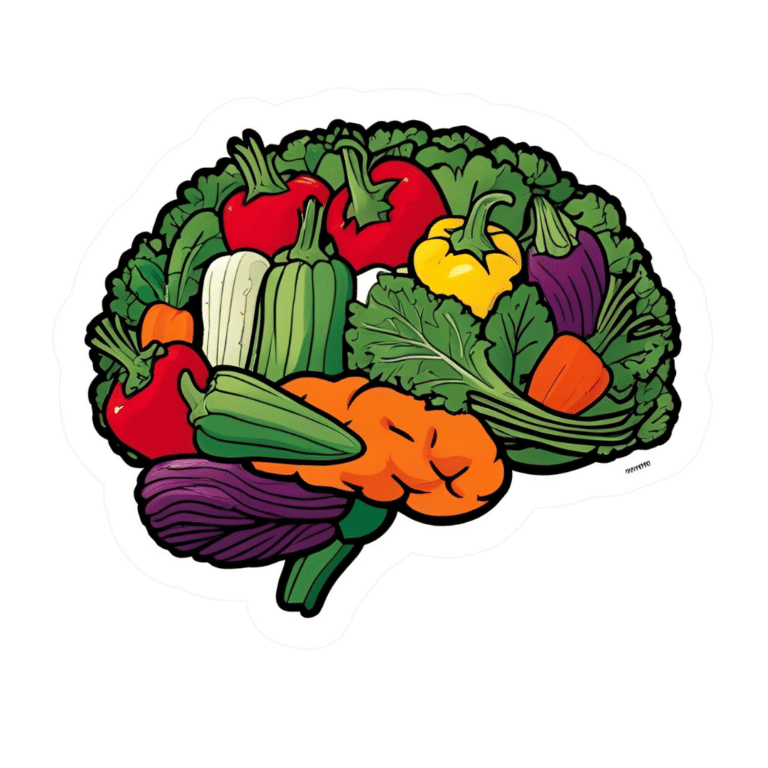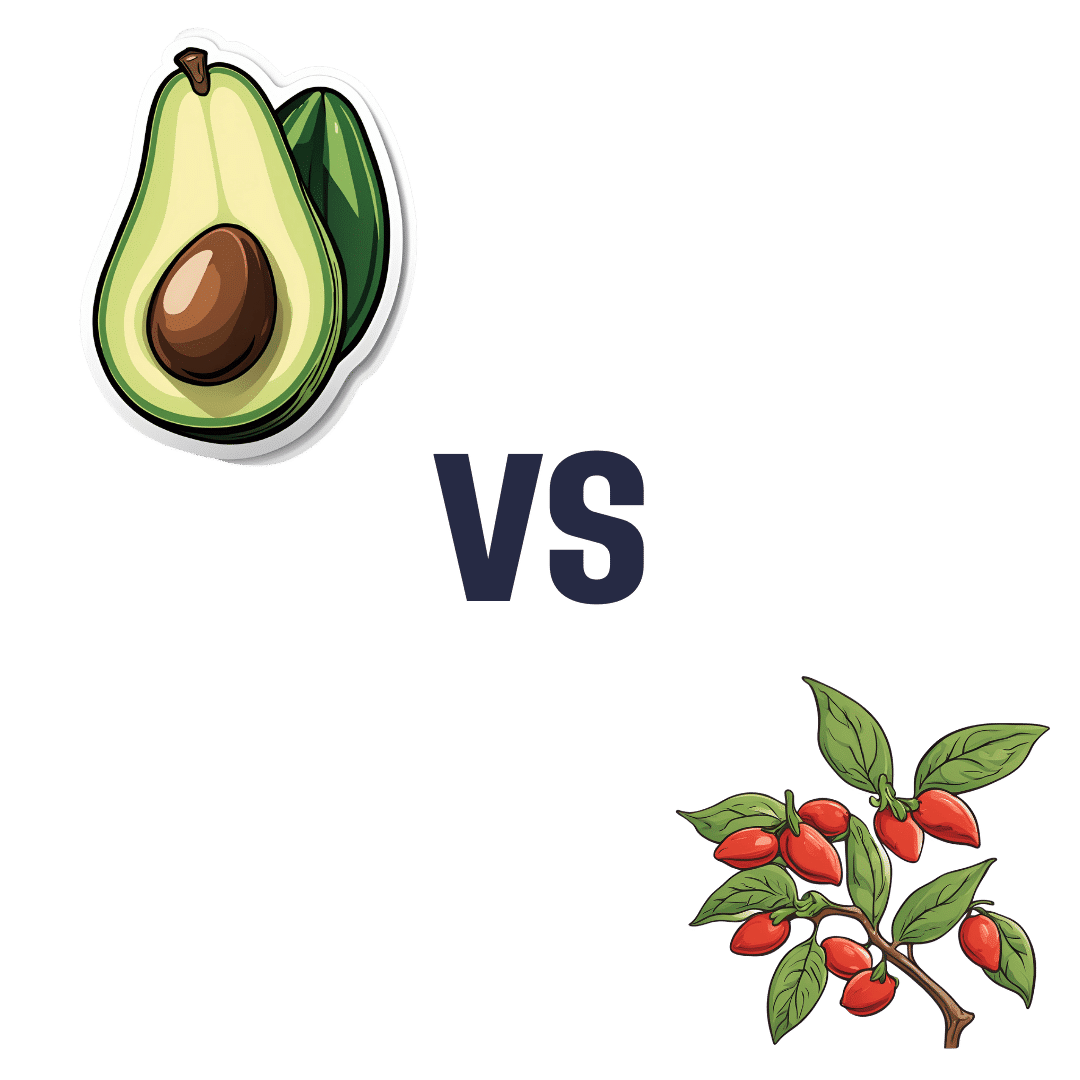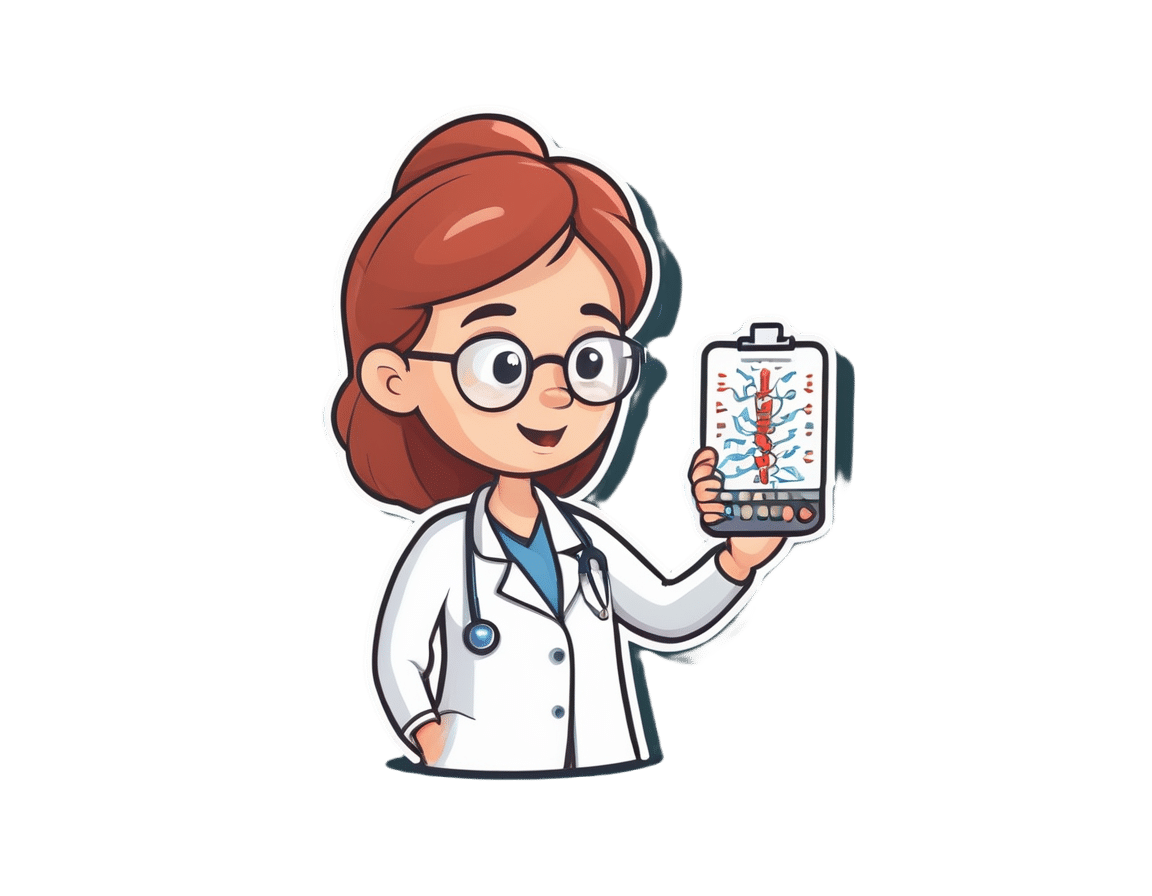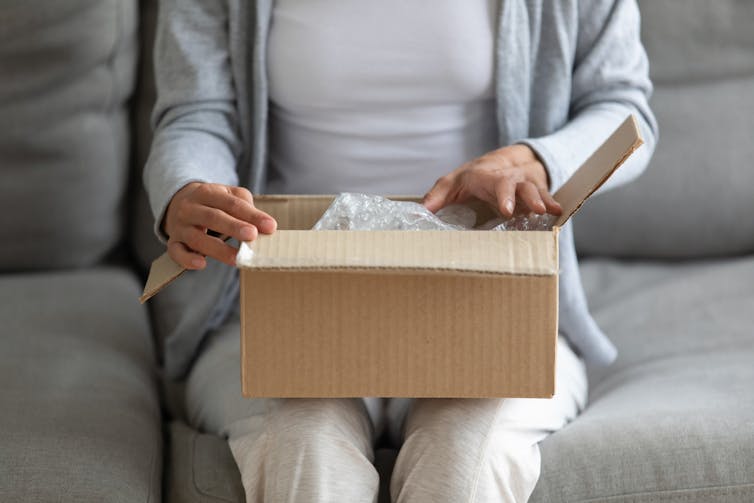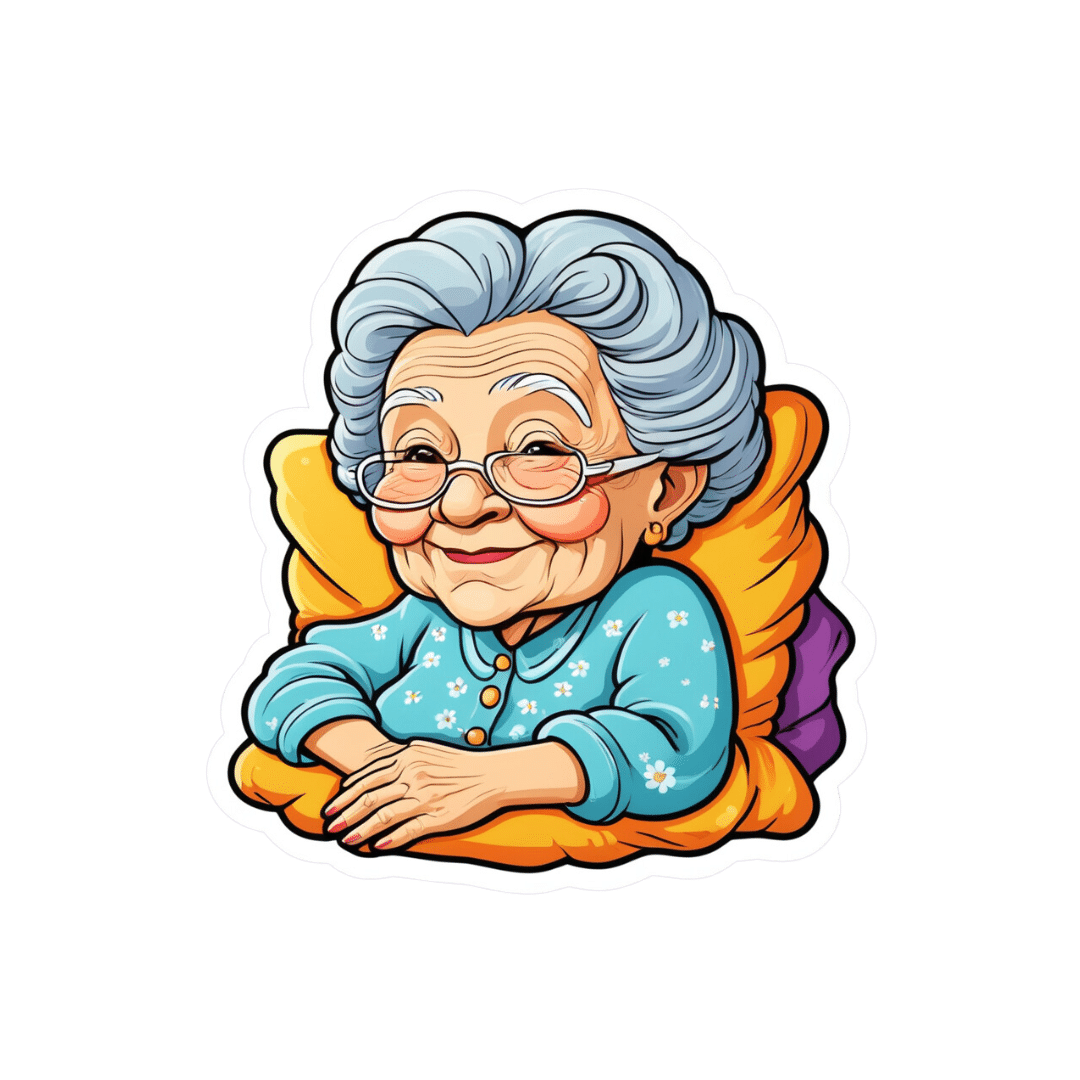
Yes, blue light from your phone can harm your skin. A dermatologist explains
10almonds is reader-supported. We may, at no cost to you, receive a portion of sales if you purchase a product through a link in this article.
Social media is full of claims that everyday habits can harm your skin. It’s also full of recommendations or advertisements for products that can protect you.
Now social media has blue light from our devices in its sights.
So can scrolling on our phones really damage your skin? And will applying creams or lotions help?
Here’s what the evidence says and what we should really be focusing on.
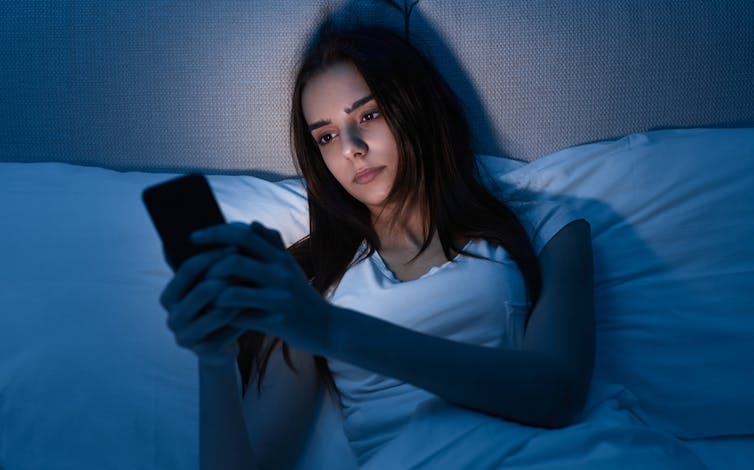
Remind me, what actually is blue light?
Blue light is part of the visible light spectrum. Sunlight is the strongest source. But our electronic devices – such as our phones, laptops and TVs – also emit it, albeit at levels 100-1,000 times lower.
Seeing as we spend so much time using these devices, there has been some concern about the impact of blue light on our health, including on our eyes and sleep.
Now, we’re learning more about the impact of blue light on our skin.
How does blue light affect the skin?
The evidence for blue light’s impact on skin is still emerging. But there are some interesting findings.
1. Blue light can increase pigmentation
Studies suggest exposure to blue light can stimulate production of melanin, the natural skin pigment that gives skin its colour.
So too much blue light can potentially worsen hyperpigmentation – overproduction of melanin leading to dark spots on the skin – especially in people with darker skin.
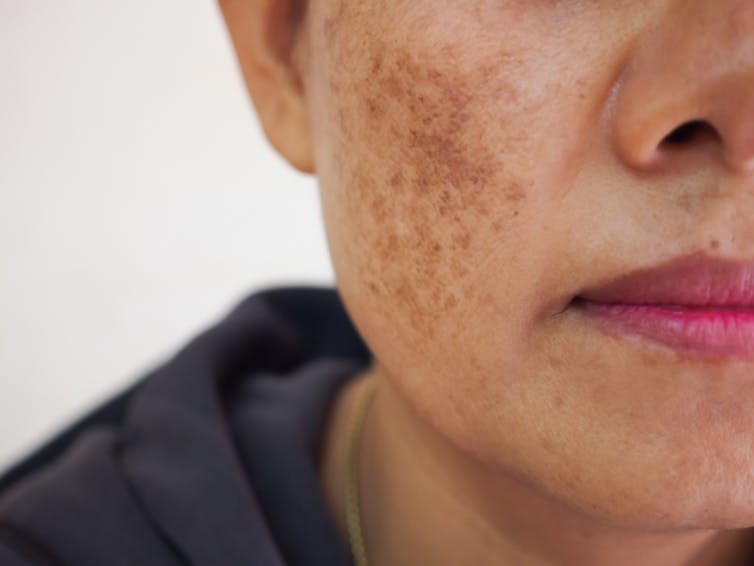
2. Blue light can give you wrinkles
Some research suggests blue light might damage collagen, a protein essential for skin structure, potentially accelerating the formation of wrinkles.
A laboratory study suggests this can happen if you hold your device one centimetre from your skin for as little as an hour.
However, for most people, if you hold your device more than 10cm away from your skin, that would reduce your exposure 100-fold. So this is much less likely to be significant.
3. Blue light can disrupt your sleep, affecting your skin
If the skin around your eyes looks dull or puffy, it’s easy to blame this directly on blue light. But as we know blue light affects sleep, what you’re probably seeing are some of the visible signs of sleep deprivation.
We know blue light is particularly good at suppressing production of melatonin. This natural hormone normally signals to our bodies when it’s time for sleep and helps regulate our sleep-wake cycle.
By suppressing melatonin, blue light exposure before bed disrupts this natural process, making it harder to fall asleep and potentially reducing the quality of your sleep.
The stimulating nature of screen content further disrupts sleep. Social media feeds, news articles, video games, or even work emails can keep our brains active and alert, hindering the transition into a sleep state.
Long-term sleep problems can also worsen existing skin conditions, such as acne, eczema and rosacea.
Sleep deprivation can elevate cortisol levels, a stress hormone that breaks down collagen, the protein responsible for skin’s firmness. Lack of sleep can also weaken the skin’s natural barrier, making it more susceptible to environmental damage and dryness.
Can skincare protect me?
The beauty industry has capitalised on concerns about blue light and offers a range of protective products such as mists, serums and lip glosses.
From a practical perspective, probably only those with the more troublesome hyperpigmentation known as melasma need to be concerned about blue light from devices.
This condition requires the skin to be well protected from all visible light at all times. The only products that are totally effective are those that block all light, namely mineral-based suncreens or some cosmetics. If you can’t see the skin through them they are going to be effective.
But there is a lack of rigorous testing for non-opaque products outside laboratories. This makes it difficult to assess if they work and if it’s worth adding them to your skincare routine.
What can I do to minimise blue light then?
Here are some simple steps you can take to minimise your exposure to blue light, especially at night when it can disrupt your sleep:
- use the “night mode” setting on your device or use a blue-light filter app to reduce your exposure to blue light in the evening
- minimise screen time before bed and create a relaxing bedtime routine to avoid the types of sleep disturbances that can affect the health of your skin
- hold your phone or device away from your skin to minimise exposure to blue light
- use sunscreen. Mineral and physical sunscreens containing titanium dioxide and iron oxides offer broad protection, including from blue light.
In a nutshell
Blue light exposure has been linked with some skin concerns, particularly pigmentation for people with darker skin. However, research is ongoing.
While skincare to protect against blue light shows promise, more testing is needed to determine if it works.
For now, prioritise good sun protection with a broad-spectrum sunscreen, which not only protects against UV, but also light.
Michael Freeman, Associate Professor of Dermatology, Bond University
This article is republished from The Conversation under a Creative Commons license. Read the original article.
Don’t Forget…
Did you arrive here from our newsletter? Don’t forget to return to the email to continue learning!
Recommended
Learn to Age Gracefully
Join the 98k+ American women taking control of their health & aging with our 100% free (and fun!) daily emails:
-
Avocado vs Goji Berries – Which is Healthier?
10almonds is reader-supported. We may, at no cost to you, receive a portion of sales if you purchase a product through a link in this article.
Our Verdict
When comparing avocado to goji berries, we picked the avocado.
Why?
It takes a special non-dried food to beat a dried food for nutritional density, but avocado manages it!
In terms of macros, avocados have more (famously health) fat; mostly monounsaturated with some polyunsaturated and a little bit of saturated, with some omega-3 and omega-6, in a healthy ratio. Meanwhile, goji berries have more fiber, carbs, and protein. As for glycemic indices, avocados are low GI (40), but goji berries are zero-GI, or, functionally, a negative glycemic index as (notwithstanding their sugar content!) they have an overall lowering effect on blood sugars. In short, both of these fruits have very different things to offer in the macros category, so we’re declaring this round a tie.
In the category of vitamins, avocados have more of vitamins A, B1, B2, B3, B5, B6, B7, B9, E, K, and choline, while goji berries have more vitamin C. A clear win for avocados!
When it comes to minerals, avocados have more copper, magnesium, manganese, phosphorus, potassium, selenium, and zinc, while goji berries have more calcium and iron. Another win for avocados!
In short, enjoy either or both (diversity is good), but for overall nutritional density, avocados win this superfood showdown today.
Want to learn more?
You might like to read:
What’s Your Plant Diversity Score?
Enjoy!
Share This Post
-
You can now order all kinds of medical tests online. Our research shows this is (mostly) a bad idea
10almonds is reader-supported. We may, at no cost to you, receive a portion of sales if you purchase a product through a link in this article.
Elena.Katkova/Shutterstock Many of us have done countless rapid antigen tests (RATs) over the course of the pandemic. Testing ourselves at home has become second nature.
But there’s also a growing worldwide market in medical tests sold online directly to the public. These are “direct-to-consumer” tests, and you can access them without seeing a doctor.
While this might sound convenient, the benefits to most consumers are questionable, as we discovered in a recent study.
What are direct-to-consumer tests?
Let’s start with what they’re not. We’re not talking about patients who are diagnosed with a condition, and use tests to monitor themselves (for example, finger-prick testing to monitor blood sugar levels for people with diabetes).
We’re also not talking about home testing kits used for population screening, such as RATs for COVID, or the “poo tests” sent to people aged 50 and over for bowel cancer screening.
Direct-to-consumer tests are products marketed to anyone who is willing to pay, without going through their GP. They can include hormone profiling tests, tests for thyroid disease and food sensitivity tests, among many others.
Some direct-to-consumer tests allow you to complete the test at home, while self-collected lab tests give you the equipment to collect a sample, which you then send to a lab. You can now also buy pathology requests for a lab directly from a company without seeing a doctor.
We’ve all become accustomed to RATs during the pandemic.
Ground Picture/ShutterstockWhat we did in our study
We searched (via Google) for direct-to-consumer products advertised for sale online in Australia between June and December 2021. We then assessed whether each test was likely to provide benefits to those who use them based on scientific literature published about the tests, and any recommendations either for or against their use from professional medical organisations.
We identified 103 types of tests and 484 individual products ranging in price from A$12.99 to A$1,947.
We concluded only 11% of these tests were likely to benefit most consumers. These included tests for STIs, where social stigma can sometimes discourage people from testing at a clinic.
A further 31% could possibly benefit a person, if they were at higher risk. For example, if a person had symptoms of thyroid disease, a test may benefit them. But the Royal Australian College of General Practitioners does not recommend testing for thyroid disease in people without symptoms because evidence showing benefits of identifying and treating people with early thyroid disease is lacking.
Some 42% were commercial “health checks” such as hormone and nutritional status tests. Although these are legitimate tests – they may be ordered by a doctor in certain circumstances, or be used in research – they have limited usefulness for consumers.
A test of your hormone or vitamin levels at a particular time can’t do much to help you improve your health, especially because test results change depending on the time of day, month or season you test.
Most worryingly, 17% of the tests were outright “quackery” that wouldn’t be recommended by any mainstream health practitioner. For example, hair analysis for assessing food allergies is unproven and can lead to misdiagnosis and ineffective treatments.
More than half of the tests we looked at didn’t state they offered a pre- or post-test consultation.
Ordering medical tests online probably isn’t a good idea.
fizkes/ShutterstockProducts available may change outside the time frame of our study, and direct-to-consumer tests not promoted or directly purchasable online, such as those offered in pharmacies or by commercial health clinics, were not included.
But in Australia, ours is the first and only study we know of mapping the scale and variety of direct-to-consumer tests sold online.
Research from other countries has similarly found a lack of evidence to support the majority of direct-to-consumer tests.
4 questions to ask before you buy a test online
Many direct-to-consumer tests offer limited benefits, and could even lead to harms. Here are four questions you should ask yourself if you’re considering buying a medical test online.
1. If I do this test, could I end up with extra medical appointments or treatments I don’t need?
Doing a test yourself might seem harmless (it’s just information, after all), but unnecessary tests often find issues that would never have caused you problems.
For example, someone taking a diabetes test may find moderately high blood sugar levels see them labelled as “pre-diabetic”. However, this diagnosis has been controversial, regarded by many as making patients out of healthy people, a large number of whom won’t go on to develop diabetes.
2. Would my GP recommend this test?
If you have worrying symptoms or risk factors, your GP can recommend the best tests for you. Tests your GP orders are more likely to be covered by Medicare, so will cost you a lot less than a direct-to-consumer test.
3. Is this a good quality test?
A good quality home self-testing kit should indicate high sensitivity (the proportion of true cases that will be accurately detected) and high specificity (the proportion of people who don’t have the disease who will be accurately ruled out). These figures should ideally be in the high 90s, and clearly printed on the product packaging.
For tests analysed in a lab, check if the lab is accredited by the National Association of Testing Authorities. Avoid tests sent to overseas labs, where Australian regulators can’t control the quality, or the protection of your sample or personal health information.
4. Do I really need this test?
There are lots of reasons to want information from a test, like peace of mind, or just curiosity. But unless you have clear symptoms and risk factors, you’re probably testing yourself unnecessarily and wasting your money.
Direct-to-consumer tests might seem like a good idea, but in most cases, you’d be better off letting sleeping dogs lie if you feel well, or going to your GP if you have concerns.
Patti Shih, Senior Lecturer, Australian Centre for Health Engagement, Evidence and Values, University of Wollongong; Fiona Stanaway, Associate Professor in Clinical Epidemiology, University of Sydney; Katy Bell, Associate Professor in Clinical Epidemiology, Sydney School of Public Health, University of Sydney, and Stacy Carter, Professor and Director, Australian Centre for Health Engagement, Evidence and Values, University of Wollongong
This article is republished from The Conversation under a Creative Commons license. Read the original article.
Share This Post
-
Ovarian cancer is hard to detect. Focusing on these 4 symptoms can help with diagnosis
10almonds is reader-supported. We may, at no cost to you, receive a portion of sales if you purchase a product through a link in this article.
Ovarian cancers are often found when they are already advanced and hard to treat.
Researchers have long believed this was because women first experienced symptoms when ovarian cancer was already well-established. Symptoms can also be hard to identify as they’re vague and similar to other conditions.
But a new study shows promising signs ovarian cancer can be detected in its early stages. The study targeted women with four specific symptoms – bloating, abdominal pain, needing to pee frequently, and feeling full quickly – and put them on a fast track to see a specialist.
As a result, even the most aggressive forms of ovarian cancer could be detected in their early stages.
So what did the study find? And what could it mean for detecting – and treating – ovarian cancer more quickly?
Ground Picture/Shutterstock Why is ovarian cancer hard to detect early?
Ovarian cancer cannot be detected via cervical cancer screening (which used to be called a pap smear) and pelvic exams aren’t useful as a screening test.
Current Australian guidelines recommend women get tested for ovarian cancer if they have symptoms for more than a month. But many of the symptoms – such as tiredness, constipation and changes in menstruation – are vague and overlap with other common illnesses.
This makes early detection a challenge. But it is crucial – a woman’s chances of surviving ovarian cancer are associated with how advanced the cancer is when she is diagnosed.
If the cancer is still confined to the original site with no spread, the five-year survival rate is 92%. But over half of women diagnosed with ovarian cancer first present when the cancer has already metastatised, meaning it has spread to other parts of the body.
If the cancer has spread to nearby lymph nodes, the survival rate is reduced to 72%. If the cancer has already metastasised and spread to distant sites at the time of diagnosis, the rate is only 31%.
There are mixed findings on whether detecting ovarian cancer earlier leads to better survival rates. For example, a trial in the UK that screened more than 200,000 women failed to reduce deaths.
That study screened the general public, rather than relying on self-reported symptoms. The new study suggests asking women to look for specific symptoms can lead to earlier diagnosis, meaning treatment can start more quickly.
What did the new study look at?
Between June 2015 and July 2022, the researchers recruited 2,596 women aged between 16 and 90 from 24 hospitals across the UK.
They were asked to monitor for these four symptoms:
- persistent abdominal distension (women often refer to this as bloating)
- feeling full shortly after starting to eat and/or loss of appetite
- pelvic or abdominal pain (which can feel like indigestion)
- needing to urinate urgently or more often.
Women who reported at least one of four symptoms persistently or frequently were put on a fast-track pathway. That means they were sent to see a gynaecologist within two weeks. The fast track pathway has been used in the UK since 2011, but is not specifically part of Australia’s guidelines.
Some 1,741 participants were put on this fast track. First, they did a blood test that measured the cancer antigen 125 (CA125). If a woman’s CA125 level was abnormal, she was sent to do a internal vaginal ultrasound.
What did they find?
The study indicates this process is better at detecting ovarian cancer than general screening of people who don’t have symptoms. Some 12% of women on the fast-track pathway were diagnosed with some kind of ovarian cancer.
A total of 6.8% of fast-tracked patients were diagnosed with high-grade serous ovarian cancer. It is the most aggressive form of cancer and responsible for 90% of ovarian cancer deaths.
Out of those women with the most aggressive form, one in four were diagnosed when the cancer was still in its early stages. That is important because it allowed treatment of the most lethal cancer before it had spread significantly through the body.
There were some promising signs in treating those with this aggressive form. The majority (95%) had surgery and three quarters (77%) had chemotherapy. Complete cytoreduction – meaning all of the cancer appears to have been removed – was achieved in six women out of ten (61%).
It’s a promising sign that there may be ways to “catch” and target ovarian cancer before it is well-established in the body.
What does this mean for detection?
The study’s findings suggest this method of early testing and referral for the symptoms leads to earlier detection of ovarian cancer. This may also improve outcomes, although the study did not track survival rates.
It also points to the importance of public awareness about symptoms.
Clinicians should be able to recognise all of the ways ovarian cancer can present, including vague symptoms like general fatigue.
But empowering members of the general public to recognise a narrower set of four symptoms can help trigger testing, detection and treatment of ovarian cancer earlier than we thought.
This could also save GPs advising every woman who has general tiredness or constipation to undergo an ovarian cancer test, making testing and treatment more targeted and efficient.
Many women remain unaware of the symptoms of ovarian cancer. This study shows recognising them may help early detection and treatment.
Jenny Doust, Clinical Professorial Research Fellow, Australian Women and Girls’ Health Research Centre, The University of Queensland
This article is republished from The Conversation under a Creative Commons license. Read the original article.
Share This Post
Related Posts
-
3 Health Things A Lot Of People Are Getting Wrong (Don’t Make These Mistakes)
10almonds is reader-supported. We may, at no cost to you, receive a portion of sales if you purchase a product through a link in this article.
It’s time for our weekly health news roundup, and this week we’re putting the spotlight on…
Don’t Dabble In dubious diabetes Drugs
Diabetes drugs are in hot demand, both for actual diabetics and also for people who want to lose weight and/or generally improve their metabolic health. However, there are a lot of claims out there for products that simply do not work and/or are outright fakes, as well as claims for supplements that are known to have a real hypoglycemic effect (such as berberine) but the supplements in question are not regulated, so it can be hard to control for quality, to ensure you are really getting what it says on the label.
As for the prescription drugs specifically (such as metformin, or GLP-1 RAs): there are online black market and gray market pharmacies who offer to sell you prescription drugs either…
- no questions asked (black market), or
- basic questions asked (e.g. “are you diabetic?”), and a doctor with flexible morals will rubber-stamp the prescription on the basis of your answers (gray market).
The problem with these is that once again they may be fakes and there is practically no accountability (these sorts of online pharmacies come and go as quickly as street vendors). Furthermore, even if they are real, self-medicating in this fashion without the requisite expert knowledge can result in messing up dosages, which can cause all sorts of issues, not least of all, death.
Read in full: The dangers of fraudulent diabetes products and how to avoid them
Related: Metformin For Weight-Loss & More
There is no “just the flu”
It’s easy, and very socially normal, to dismiss flu—which has killed millions—as “just the flu”.
However, flu deaths have surpassed COVID deaths all so recently this year (you are mindful that COVID is still out and killing people, yes? Governments declaring the crisis over doesn’t make the virus pack up and retire), and because it’s peaking a little late (it had seemed to be peaking just after new year, which would be normal, but it’s enjoying a second larger surge now), people are letting their guard down more.
Thus, getting the current flu vaccination is good, if available (we know it’s not fun, but neither is being hospitalized by flu), and either way, taking care of all the usual disease-avoidance and immune-boosting strategies (see our “related” link for those).
Read in full: Report indicates this flu season is the worst in a decade
Related: Why Some People Get Sick More (And How To Not Be One Of Them)
The hospital washbasins that give you extra bugs
First they came for the hand-dryer machines, and we did not speak up because those things are so noisy.
But more seriously: just like hand-dryer machines are now fairly well-known to incubate and spread germs at impressive rates, washbasins have come under scrutiny because the process goes:
- Person A has germs on their hands, and washes them (yay)
- The germs are now in the washbasin (soap causes them to slide off, but doesn’t usually kill them)
- Person B has germs on their hands, and washes them
- The splashback from the water hitting the washbasin distributes person A’s germs onto person B
- Not just their hands, which would be less of a problem (they are getting washed right now, after all), but also their face, because yes, even with flow restrictors, the splashback produces respirable-sized bioaerosols that travel far and easily
In other words: it’s not just the visible/tangible splashback you need to be aware of, but also, that which you can’t see or feel, too.
Read in full: Researchers warn about germ splashback from washbasins
Related: The Truth About Handwashing
Take care!
Don’t Forget…
Did you arrive here from our newsletter? Don’t forget to return to the email to continue learning!
Learn to Age Gracefully
Join the 98k+ American women taking control of their health & aging with our 100% free (and fun!) daily emails:
-
Beyond Burger vs Beef Burger – Which is Healthier?
10almonds is reader-supported. We may, at no cost to you, receive a portion of sales if you purchase a product through a link in this article.
Our Verdict
When comparing the Beyond Burger to a grass-fed beef burger, we picked the Beyond Burger—but it was very close.
Why?
The macronutrient profiles of the two are almost identical, including the amount of protein, the amount of fat, and the amount of that fat that’s saturated.
Where they stand apart is in two ways:
1) Red meat is classed as a group 2A carcinogen
2) The Beyond Burger contains more sodium (about 1/5 of the daily allowance according to the AHA, or 1/4 of the daily allowance according to the WHO)Neither of those things are great, so how to decide which is worse?
• Cancer and heart disease are both killers, with heart disease claiming more victims.
• However, we do need some sodium to live, whereas we don’t need carcinogens to live.Tie-breaker: the sodium content in the Beyond Burger is likely to be offset by the fact that it’s a fully seasoned burger and will be eaten as-is, whereas the beef burger will doubtlessly have seasonings added before it’s eaten—which may cause it to equal or even exceed the salt content of the Beyond Burger.
The cancer risk for the beef burger, meanwhile, stays one-sided.
One thing’s for sure though: neither of them are exactly a cornerstone of a healthy diet, and either are best enjoyed as an occasional indulgence.
Some further reading:
• Lesser-Known Salt Risks
• Food Choices And Cancer Risk
• Hypertension: Factors Far More Relevant Than SaltDon’t Forget…
Did you arrive here from our newsletter? Don’t forget to return to the email to continue learning!
Learn to Age Gracefully
Join the 98k+ American women taking control of their health & aging with our 100% free (and fun!) daily emails:
-
Black Beans vs Fava Beans – Which is Healthier?
10almonds is reader-supported. We may, at no cost to you, receive a portion of sales if you purchase a product through a link in this article.
Our Verdict
When comparing black beans to fava beans, we picked the black beans.
Why?
In terms of macros, black beans have more protein, carbs, and notably more fiber, the ratio of the latter two also being such that black beans enjoy the lower glycemic index (but both are still good). All in all, a clear win for black beans in this category.
In the category of vitamins, black beans have more of vitamins B1, B5, B6, E, K, and choline, while fava beans have more of vitamins A, B2, B3, B9, and C. That’s a marginal 6:5 win for black beans, before we take into account that they also have 43x as much vitamin E, which is quite a margin, while fava beans doesn’t have any similarly stand-out nutrient. So, another clear win for black beans.
When it comes to minerals, black beans have more calcium, copper, iron, magnesium, phosphorus, and potassium, while fava beans have more manganese, selenium, and zinc. Superficially this is a 6:3 win for black beans; it’s worth noting however that the margins aren’t high on either side in the case of any mineral, so this one’s closer than it looks. Still a win for black beans, though.
Adding up the sections makes for an easy overall win for black beans, but by all means, enjoy either or both—diversity is good!
Want to learn more?
You might like to read:
Eat More (Of This) For Lower Blood Pressure
Take care!
Don’t Forget…
Did you arrive here from our newsletter? Don’t forget to return to the email to continue learning!
Learn to Age Gracefully
Join the 98k+ American women taking control of their health & aging with our 100% free (and fun!) daily emails:

